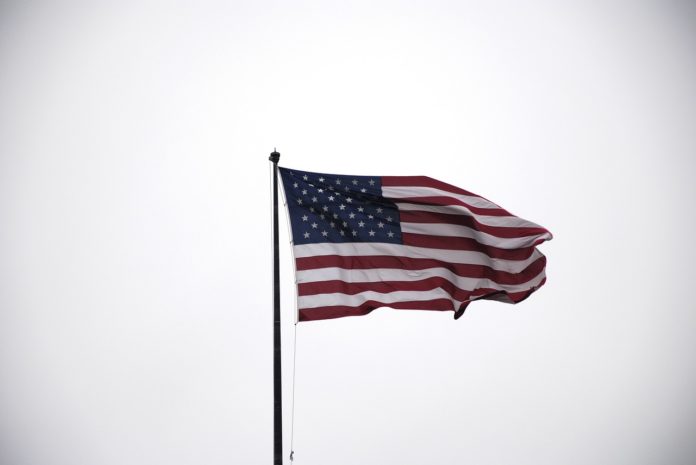
For most people in the state of Minnesota, the idea of this state swinging red for the presidential election is an impossibility: With progressive ideals firmly ingrained in the Twin Cities (with a seemingly non-existent public presence by those that lean right) it would seem this is a correct conclusion.
If you look at Minnesota’s past, however, that conclusion gets a bit shaky.
Minnesota red, white, and blue
The history of Minnesota is a mixed bag with Republican, Democratic, and, yes, even Progressive candidate support for the United States Presidency. From the founding of the state in 1860 through the election of 1928, Minnesota supported the Republican candidate for the presidency – with the exception of the 1912 election when the Progressive candidate was supported.
(And even the support of the Progressive candidate in 1912 can be chalked up as support for a Republican, as the Progressive candidate that year was former Republican president Theodore Roosevelt.)
The reason most people believe that Minnesota will never go red is for the simple reason that most people today don’t remember the state voting for a Republican presidential candidate. Since 1932, the state of Minnesota has only supported the Republican candidate for president three times: In 1952 and 1956 the state supported Dwight D. Eisenhower, the WWII general that oversaw many invasions including D-Day. The next time a Republican won Minnesota was 1972, when now-infamous Richard Nixon was the candidate.
And since 1972 Minnesota has supported the Democratic candidate for president in every election. Minnesota supported their own Walter Mondale during the 1984 election; an election in which Minnesota was the only state in the country Democrats took from Ronald Reagan. This means in the past eleven elections the majority of voting citizens of Minnesota have voted blue; forty-four years in a row that this state has not swung red for a Presidential candidate.
(A good visual representation of that fact and everything discussed above can be found HERE)
Outside of the south and D.C., Minnesota has the longest running streak for supporting a Democratic candidate for president in the country.
A state changes, or stays the same?
Now back to the question at hand: Could Minnesota swing red again?
Minnesota has a strange political history. Remember, we voted in a former wrestler for governor, and an SNL alum to the senate. The reason that Minnesota, now more than ever, has a possibility to swing red is that both sides in elections have gotten very good at lighting a fire under their base and getting them out to vote: Minnesota has had the highest voter turn out in the United States the last two Presidential Elections at just under 75%.
In the 2016 presidential election, the margin of victory in Minnesota for the Democratic Candidate was very slim compared to past elections. Democratic Candidate Hillary Clinton only beat Republican Candidate Donald Trump by 1.5% of the vote (a difference of 43,785 votes). With 226,837 votes going to other candidates outside the two main parties there is very large opportunity for the Republican party to steal votes and close that margin and turn it into a win in the future.
And the past doesn’t always dictate the future anyway. Don’t believe me? Take a look at Elliott County, Kentucky. This county in Kentucky had never voted for a Republican candidate since the United States was founded. Let that sink in for a moment: They had never voted for a republican presidential candidate in the history of the United States. This county has 5,214 registered votes, and 4,581 of those voters are registered Democrats. Registered Republican voters in this county are just 429.
So you may be thinking, “Well, it was probably a slim victory for President Trump.”
It was a landslide victory, with 70% of the vote in Elliot Country going to Trump. The main reason, given in this article for his win was that they felt like he was speaking to them and that he was going to shake things up in the political world of D.C. politics.
Sound familiar?
Whether we agree or disagree that Minnesota could swing red in 2020, this last election was a wake up call to both parties. There are a ton of theories out there on how President Trump won the election. There is a CNN article outlining 24 of them HERE. Two theories stick out that, if ignored, could cause Minnesota to turn red in a presidential election in the future:
The first is that, although Bernie Sanders was the popular candidate among the base for Democrats, the party went against that; they went against their base causing some Democrats to look to less-mainstream candidates such as Jill Stein.
The second revolves around growing backlash from people being generalized by labels from the perceived left. If you call anyone a racist or sexist long enough, even indirectly, you are going to motivate them against you. There is a large population of moderate right-leaning voters; these voters believe in fiscal responsibility, but also think everyone has the right to be married and that some government programs are indeed needed. But this group of voters, under seemingly constant bombardment for their party affiliations, turned to something of a “revenge” vote.
With such a small margin of victory for democrats in Minnesota in 2016, we could end up a battleground state, or swing state, in 2020. The Democratic party will need to come with a game plan to motivate their current base to vote. They will also need to find a way to grow that base and win back some voters they may have pushed away in this past election. If the Republican party hopes to win this state they will have to come in and speak to the working class and try to shed the label of being for the rich.
It is, of course, impossible to know what will happen. The current presidency will have an impact, and influence voters, over next four years which will play perhaps the largest role.
If the Democrats are unable to motivate their base, however, languishing as they have been (in the House of Representatives, for example, which turned red in 2016), and the Republican candidate in 2020 or after has a message that resonates with voters, it seems it wouldn’t take much to push Minnesota red.
Read this next: Government layers: Understanding Twin Cities government, from the outside to the inside
















